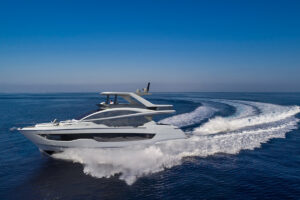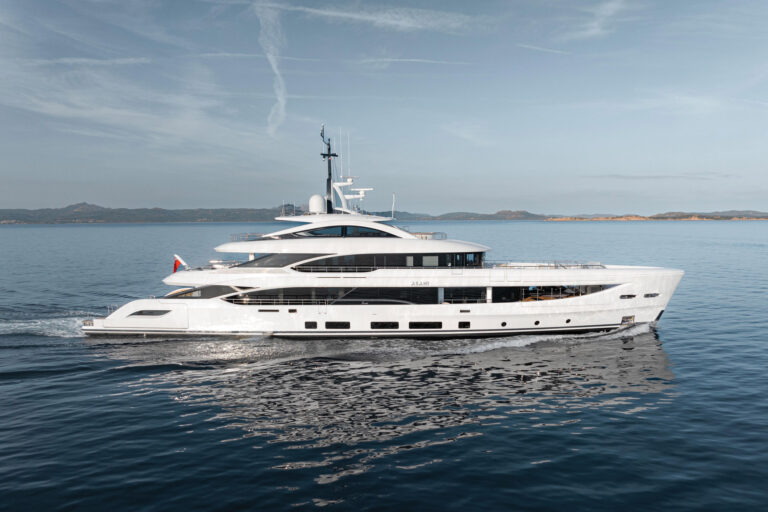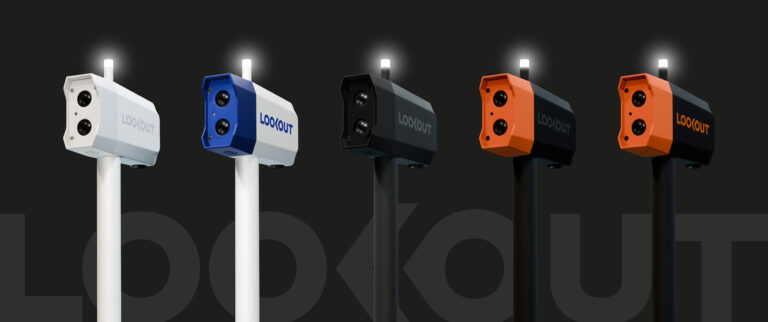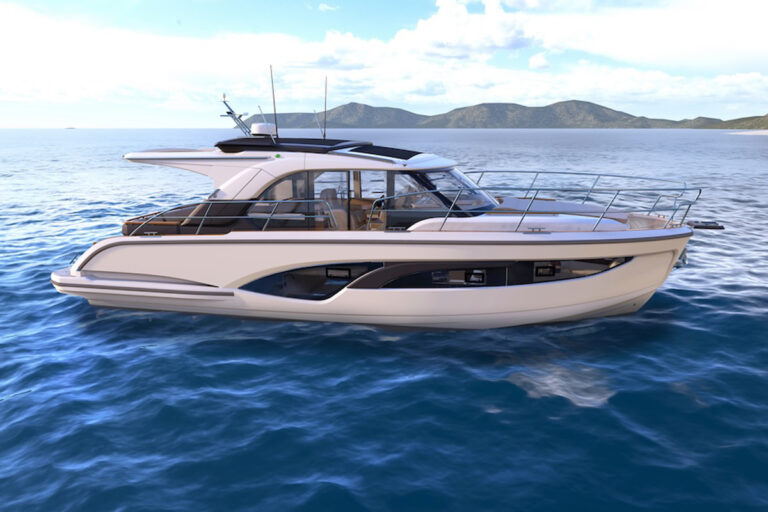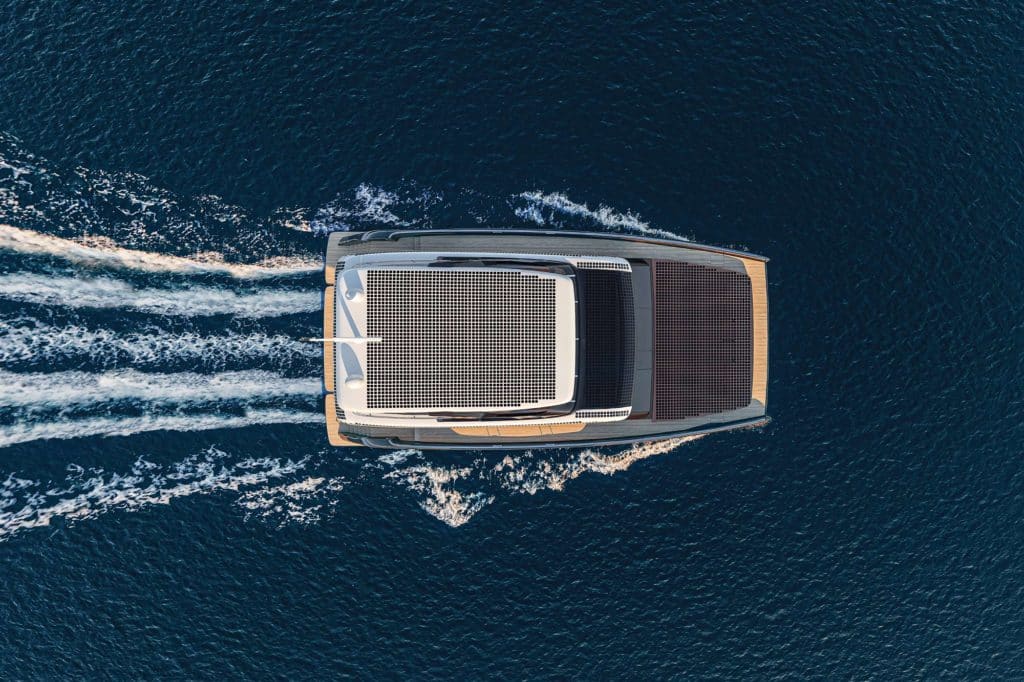
The powerboat drivers idle near their starting lines off Monaco, waiting for the signal to punch the throttles. But they’re different from those who have raced here since 1904: These nine boats are competing in the Solar Class at the 2021 Monaco Energy Boat Challenge.
Every July, the Monaco Yacht Club organizes this race, which features next-generation technologies. This year, after five days of competition—including a 16-nautical-mile-lap race, slalom racing and a championship race—the Dutch-flagged Sunflare solar team claimed top honors in the sun-powered class.
Is their boat’s top speed of about 29 knots going to break any world speed records? No. But the Monaco Energy Boat Challenge is a harbinger of recreational boating’s not-so-distant future.
That future, of being carbon-free, has been a long time coming. German inventor Moritz von Jacobi created an early electric boat in 1839, a 24-footer that could carry 14 passengers at roughly 2.6 knots. In 1882, Anthony Reckenzaun, an Austria-born electrical engineer, built Electricity, a steel-hulled launch with onboard batteries that was considered one of the first “practical” electric vessels. Other innovations continued until circa 1910, when Ole Evinrude’s gasoline-fired outboards began their own revolution.
Now, a century later, electric yachts harness technologies such as solar panels, electric drivetrains, lightweight construction in carbon fiber, lithium-based batteries and, in some cases, hydrofoils. These boats’ performance, comfort and range can rival some traditionally powered yachts—and they are clean and quiet. Much like Teslas, they sometimes also come with memorable acceleration curves.
Contemporary electric boats range in size and complexity. There are displacement monohulls such as Zin Boat’s 20-foot Z2T and Z2R and X Shore’s 26-foot Eelex 8000. There are hydrofoilers such as the upcoming Navier 27 (see sidebar). There are also boats like those contesting the Monaco Energy Boat Challenge, as well as bluewater cruisers with multiple hulls.
“The first advantage is space,” says Michael Köhler, CEO of Silent-Yachts. “Catamarans have more surface area, which benefits the number of solar panels that can be installed.”
Other advantages of multiple hulls in electric-boat design include increased form stability (no ballasted keels) and reduced drag. “This low resistance means they’re better suited for electric motoring, as they need a lot less energy to move than monohulls,” says Nicolas Lapp, Sunreef Yachts’ strategy consultant for research and development.
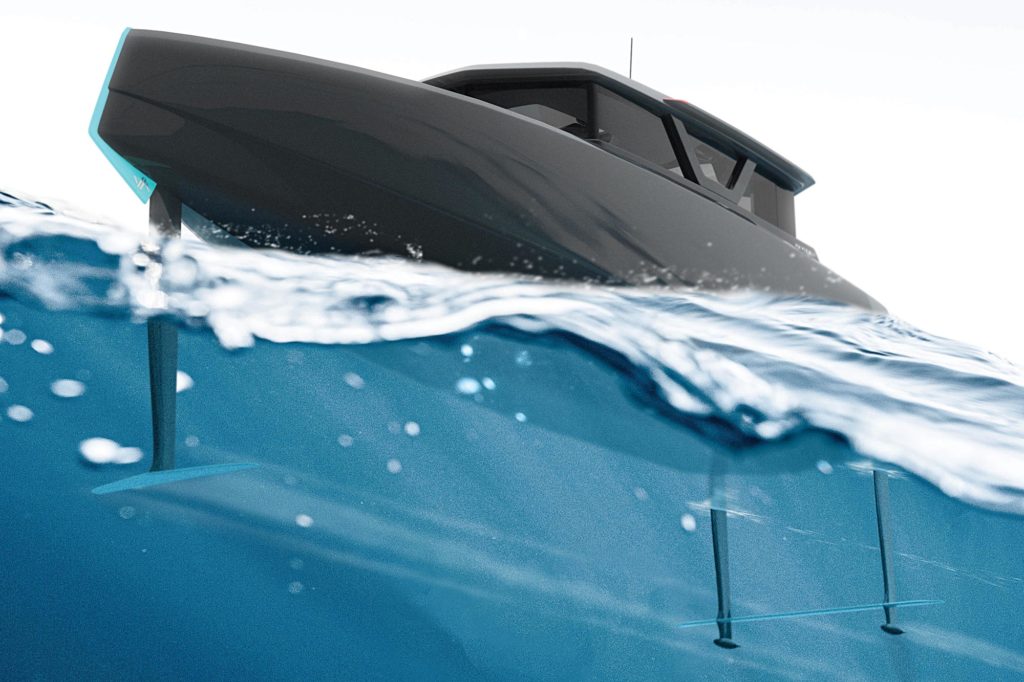
One key to reducing a yacht’s energy requirements involves reducing its displacement. “The lighter the yacht, the less energy is needed to move it,” Köhler says. “For this reason, our yachts are made of lightweight carbon fiber.”
While all of the yachts discussed in this article can be charged via shore-supplied AC power, cruisers typically want greater autonomy. To that end, Silent-Yachts and Sunreef Yachts use solar panels. The team at Silent-Yachts specs its panels from California-based SunPower, while Sunreef Yachts created the marine industry’s first flexible solar panels, which are flush-mounted on hulls, masts and superstructures.
Aesthetics matter in yachting, and not everyone wants to cruise aboard a solar farm. Here, Lapp sees an opportunity. “If you want sustainability to be cool and attract the attention of new generations, the appeal of the product is something you cannot neglect,” he says. “Seamless integration of the solar panels was a way for us to prove that sustainability [can] generate green power [and] cool looks.” (After all, no one buys a Tesla because it looks like a Chevy.)
While the Caribbean and Mediterranean are blessed with abundant lumens, other world-class cruising grounds—say, the Pacific Northwest—aren’t equally illuminated. Because of this, electric cruising yachts typically also include redundant systems to ensure that the navigation lights stay on without heading to a marina.
“Every Silent yacht is equipped with a backup generator,” Köhler says. “This makes sure you never run out of energy, even when facing longer periods of unfavorable weather conditions.”
Rainy-day alternatives can include other green-power solutions. Sunreef Yachts typically specs dual wind generators atop its yachts’ rooftops. However, Lapp is realistic about their capabilities.
“Wind turbines can only supply a small fraction of the energy that our solar panels can,” he says, explaining that, in the right conditions, Sunreef’s panels typically generate 40 times more juice than the turbines. “What’s nice about working with wind is that your generators work all the time.” That includes under navigation, at the dock and throughout the night.

Energy sources aside, these experts say that high-quality batteries offering high performance are critical. Larger-capacity battery banks ensure more power reserves, but adding them can affect a yacht’s performance.
“The weight of the battery banks is also an important factor, as it can reduce or increase the overall efficiency,” Köhler says.
Battery performance is also critical for electric-powered coastal craft. One example is X Shore’s Eelex 8000, which has a high-performance 225 kW electric motor and dual 63 kWh lithium-ion batteries that can be charged anywhere there’s a power socket, or supercharged using the same technology as electric cars.
“The batteries can be charged in five to eight hours with three-phase power plugs and one to two hours with superchargers,” says Elias Wästberg, X Shore’s project manager.
While superchargers don’t exist in the middle of oceans, builders of electric-powered bluewater boats have already done this math. Silent-Yachts says its power catamarans are built to offer transatlantic autonomy, but a lot depends on how the owner uses the boat to minimize energy consumption.
“During sunny conditions, a general rule of thumb is that cruising at 6 knots maintains a balance between consumption and production,” Köhler says. “This basically means unlimited range. …The main thing that owners can do to increase range is reduce speed and turn off any appliances.”
This begs the question: Do owners need to downshift their expectations for onboard comfort when going electric?
“There’s no need to make any sacrifices or closely monitor energy levels,” Lapp says. “A lot of energy saving is done automatically. For example, at night, the air-conditioning system focuses solely on selected areas and cabins. … It consumes 70 percent less energy than most systems.”
And should the battery banks get thirsty, there’s always the generator.
Cruising with zero emissions might be a selling point for some customers, but one need not squeeze trees to embrace yachting’s future. “Running costs and maintenance levels are much lower compared to regular-motor catamarans,” Köhler says.
Then, there are unquantifiable returns. “You get to enjoy the absolute luxury of cruising in total silence and without disturbing the marine life around you,” Lapp says, adding that this experience helps owners create “better connections with the environment.”
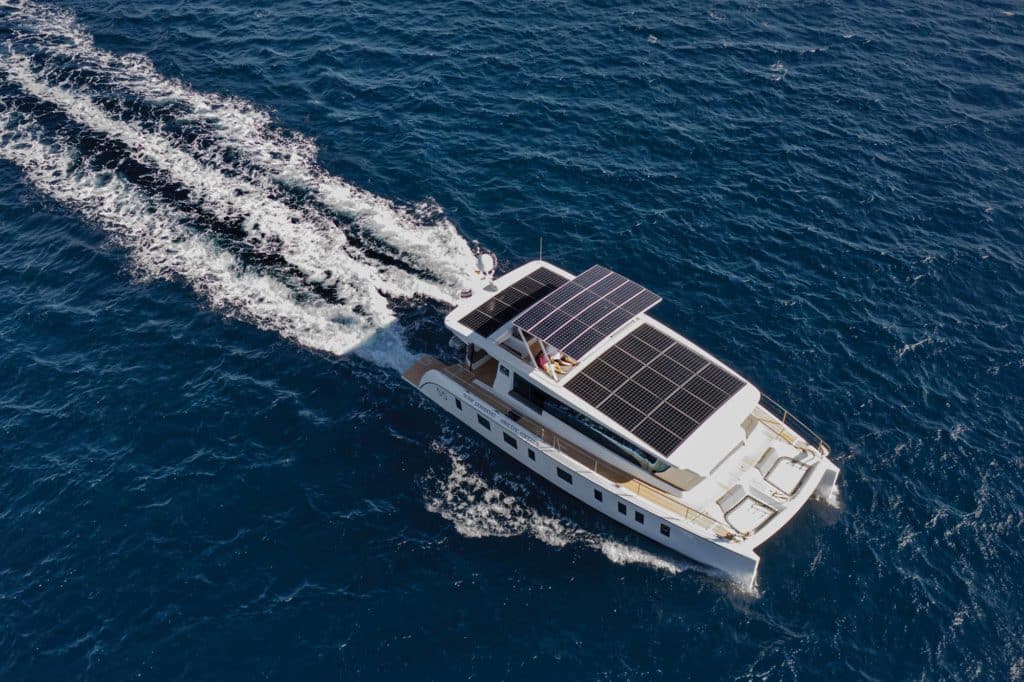
Finally, there can also be the grin factor. “The Eelex 8000 can accelerate from 0 to 20 knots in 4.2 seconds,” Wästberg says. “The software captures 150 data points every second, allowing for real-time analytics of battery and engine performance, including temperature, humidity, pressure, location and the craft’s system status.”
While electric yachts boast some impressive capabilities, free lunches are unicorns. Electric yachts don’t emit carbon dioxide, but their carbon footprint likely deepens with stem-to-stern life-cycle assessments of their photovoltaic panels, carbon-fiber hulls and lithium-based batteries. Then there’s the inconvenient financial truth that all batteries have a finite number of charge cycles and eventually need refitting. Also, for now, diesel mechanics greatly outnumber certified electric-boat technicians, especially in remote locales.
Still, few people gifted with foresight would have bet against Evinrude’s outboards in the early 20th century. The same holds true for today’s electric boats. One only has to look at the Monaco Energy Boat Challenge to realize that some of the brightest minds in the marine and technology fields are committed to a carbon-free future.
Couple this trend with the fact that electric yachts are already providing better performance and compromise-free cruising, and yachting’s future is looking bright (green).
Navier 27
Navier Boats teamed up with Paul Bieker, an America’s Cup-winning naval architect and hydrofoil expert, to create the Navier 27. It delivers 30-plus-knot top speeds or a 75-nautical-mile range at slower speeds. While impressive, hydrofoils require active control, which is a crux that Navier solved by creating an autonomous foil-control system.
Sunreef 100 Eco
It’s one thing to build a solar-powered vessel for the Monaco Energy Boat Challenge; it’s a different challenge to build an electric 100-footer that can accommodate 12 guests and five crewmembers. The Sunreef 100 Eco’s flexible solar panels mean this cat can accommodate 2,610 square feet of solar-farm space and generate up to 46 kilowatts per hour of DC power, which should keep its high-performance lithium-ion batteries topped off.
Hands on the Helm
While the Navier 27 will initially require human hands on its helm, down-the-road software releases are expected to enable autonomous driving.
Panel Planners
While photovoltaic panels can be fitted to any yacht, catamarans present themselves as an ideal platform, given their beam and broader coach-roof space.




